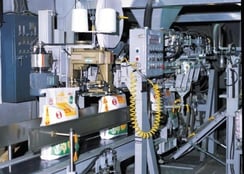
When you're considering have equipment appraisals performed on your business, it's normal to wonder what the equipment appraiser will inspect during the machinery valuation process. But what parts are inspected during a rubber equipment appraisal? Here is a quick look at what kind of things a professional machine appraisal takes into account when dealing with rubber equipment:
Areas inspected during a rubber equipment appraisal
- General condition of the machinery: This will check whether the machinery itself is in general good condition. This can include virtually every system of the machine, from feed bins to extruders. Pulleys, belts, drives and bearing will be checked for smooth operation. It can also include checking the quality of the output from the machine, to make sure it is producing the appropriate material in a uniform quality and quantity.
- Condition of safety features: Because accidents cost a business in terms of worker morale, worker's compensation claims and legal fees and penalties, safety equipment should be in place and in good repair. Missing safety features will lower the value of your machinery, because most sensible buyers won't purchase a piece of machinery that has had its safety features compromised.
- Signs of abuse: These can be worn paint, guards that are loose or worn, problems or breakdowns that are left unrepaired, major dents, structural damage such as bends, cracks and poor repairs, loose or worn components that prevent it from working correctly or similar concerns. Machinery that shows signs of abuse typically has a much shorter expected lifespan than equipment that has been properly looked after.
- Records related to maintenance and repair: This can be in the form of maintenance and repair logs, but if you haven't been able to keep up a log, don't panic. If you can produce receipts for these services on that particular machine, statements from mechanics or technicians that have provided these services or similar documentation, they will often suffice. These records help prove that the machinery is being well cared for and is being maintained in good condition.
- The conditions in which the machinery is being kept: If your machinery is being kept in a damp or dusty environment or in extreme temperatures, it may lower the expected lifespan and the appraised value.
- Estimated remaining machine lifespan: This will tie in to signs of abuse, general condition and maintenance records, but if the machinery is expected to last longer or shorter than the industry average, it will affect the final valuation of your machinery.
- Current market conditions: If you're in an industry that is booming and there isn't enough equipment to go around, your equipment may have a higher value than it would if your industry is going through a bust cycle and there is plenty of equipment on the market that isn't selling.
- Reason for the appraisal: There are any number of reasons a business has equipment valuations performed, from deciding when to replace aging equipment to gaining better accuracy in the business' bookkeeping to securing a loan for expansion. Different approaches are taken depending on the need for the appraisal.
By knowing what areas are considered during a rubber equipment appraisal, it's much easier to have all the necessary areas accessible for the equipment appraiser ahead of time.

